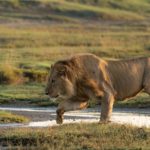- Plan your clothing for both environments: breathable layers for safari and quick-dry beachwear.
- Pack versatile footwear: sturdy shoes for safari and flip-flops for the beach.
- Bring essential accessories like a wide-brimmed hat, sunglasses, sunscreen, and insect repellent.
- Organize practical gear: a camera with extra batteries, a lightweight waterproof backpack, and travel-sized toiletries.
Essential Packing Tips for a Combined Safari and Beach Vacation
When packing for a combined safari and beach vacation, versatility is key. Start with lightweight, breathable clothing to stay comfortable in both settings. Choose neutral-colored outfits for safaris to blend into the environment, reducing the chance of startling wildlife. For the beach, bring swimwear and cover-ups that dry quickly. It’s helpful to pack layers for varying temperatures, especially for early morning game drives.
Footwear is an important consideration, too. Sturdy, closed-toe shoes are essential for safaris, offering protection and comfort during walks. For beach days, pack sandals or flip-flops that you can easily slip on and off. A pair of water shoes might also be useful if you plan to explore rocky shores. Don’t forget to bring socks that are breathable and moisture-wicking to avoid blisters.
Accessories can make or break your trip. A wide-brimmed hat and sunglasses are must-haves for both safari and beach environments. Protect your skin with sunscreen, and consider packing insect repellent to ward off bugs in the wild. To capture memories, a good camera with a zoom lens is invaluable, so remember to include chargers and extra batteries. A lightweight, waterproof backpack will help keep your essentials organized and secure.
Finally, ensure you have the right toiletries. Beach vacations call for aloe vera gel to soothe any sunburns. A compact first-aid kit is essential for unexpected scrapes or blisters. Pack travel-sized versions of your daily essentials like shampoo, conditioner, and toothpaste. And don’t forget any prescription medications you might need. By planning thoughtfully, you can enjoy a seamless adventure, from the savannah to the sea.
Clothing and Gear Selection for Varied Environments
Choosing the right clothing is important when you’re facing different environments on your trip. Breathable fabrics like cotton and linen keep you cool during hot days. For safari, opt for neutral tones—think beige, brown, and khaki. These colors blend into the natural surroundings, helping you go unnoticed by wildlife. Pack a fleece or jacket for cooler nights and mornings.
When it comes to gear, versatility is essential. Convertible pants that can transform into shorts are a great option. They take up less space in your luggage and offer flexibility. A lightweight rain jacket is a must, as weather can be unpredictable. Quick-dry clothing is also ideal, especially for beach activities. Don’t forget a scarf to protect your neck from the sun and dust.
Accessories play a crucial role, too. A sturdy hat with a brim shields your face from the sun’s harsh rays. Sunglasses with UV protection are equally important. Carry a durable, reusable water bottle to stay hydrated. A headlamp can be handy for nighttime activities or in case of power outages. A multi-tool can also be useful in various situations.
Packing the right technology ensures you capture memorable moments. A good-quality camera is essential for both safari and beach settings. Pack extra batteries and memory cards. A portable charger will keep your devices powered throughout your adventures. Noise-canceling headphones can provide some peace during long journeys. Finally, ensure all your electronic gear is packed in waterproof bags to protect against unexpected rain or splashes.
Planning an Itinerary that Balances Wildlife Sightings and Seaside Relaxation
Creating a balanced itinerary involves careful planning to make the most of your safari and beach experiences. Start by allocating time for each activity. A typical trip could include a few days dedicated to exploring the savannah, followed by relaxing beach days. Make sure to schedule safari activities like game drives early in the morning or late in the evening. These times provide the best chances for wildlife sightings.
Next, think about travel logistics. Arrange accommodations that are conveniently located between your safari destinations and beach resorts. This will minimize travel time and maximize enjoyment. Choose lodges that offer guided tours to enhance your wildlife experience. For beach stays, consider resorts with easy access to water sports and other leisure activities. Balance your itinerary to include both adventure and relaxation.
Consider including a variety of activities to keep the itinerary engaging. Safaris aren’t just about game drives; walking safaris and boat trips offer different perspectives of the wildlife. On the beach, snorkelling, kayaking, and beach volleyball can blend fun and fitness. A mix of activities keeps the itinerary fresh and exciting. Allocate time for rest to avoid travel fatigue.
Organizing your days with a flexible schedule adds value to your trip. Keep some free time open for spontaneous adventures or simply unwinding. You might discover a hidden trail or a local market worth exploring. Use a daily schedule that outlines important activities but remains adaptable. This approach ensures that you experience both the thrill of the wild and the serenity of the beach.
What to Pack for Safari – My Packing List
Conclusion
Combining a safari and beach adventure offers the best of both worlds. With thoughtful preparation and packing, you can ensure you have everything needed for both environments. Balance is key, from versatile clothing to essential accessories.
Remember, the aim is to blend excitement with relaxation seamlessly. Proper planning will allow you to fully immerse yourself in the thrill of a safari and the tranquility of beachside relaxation. Enjoy the diverse experiences without any worries.













